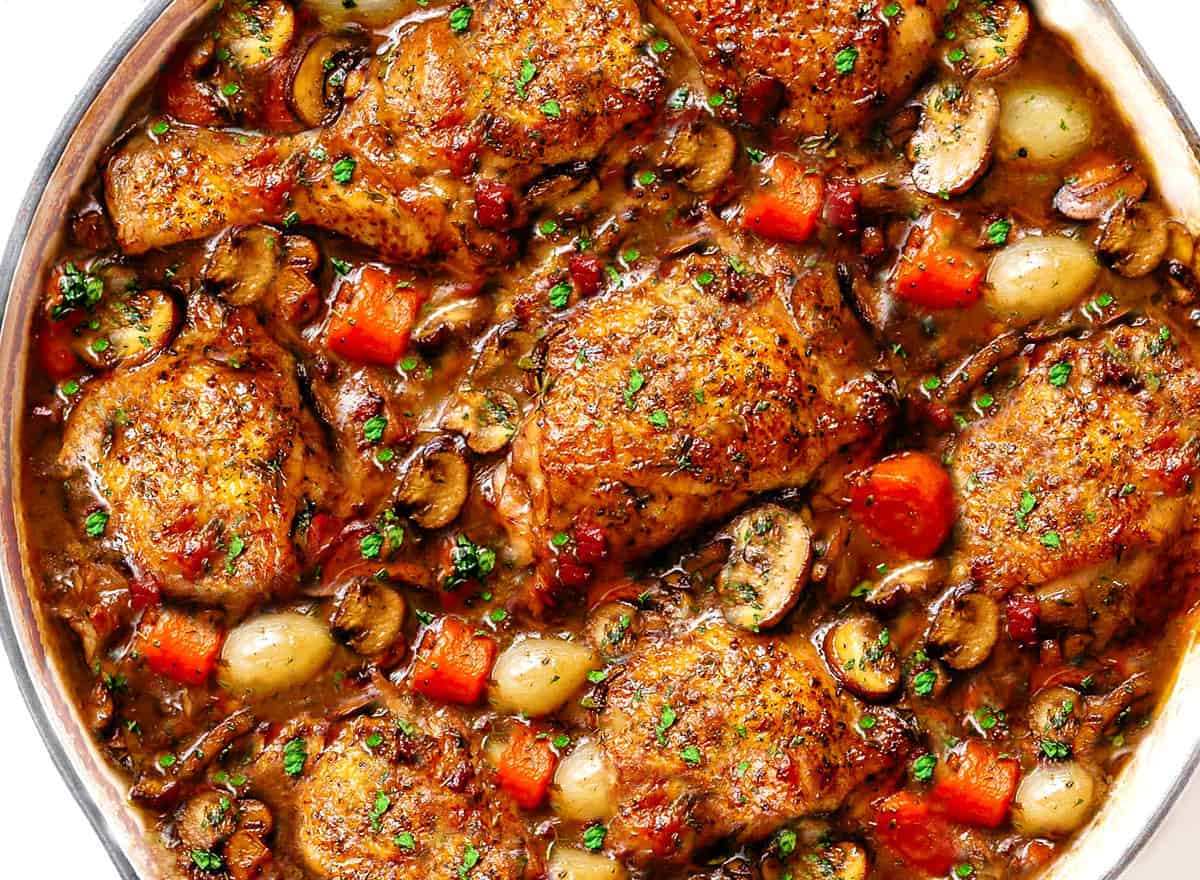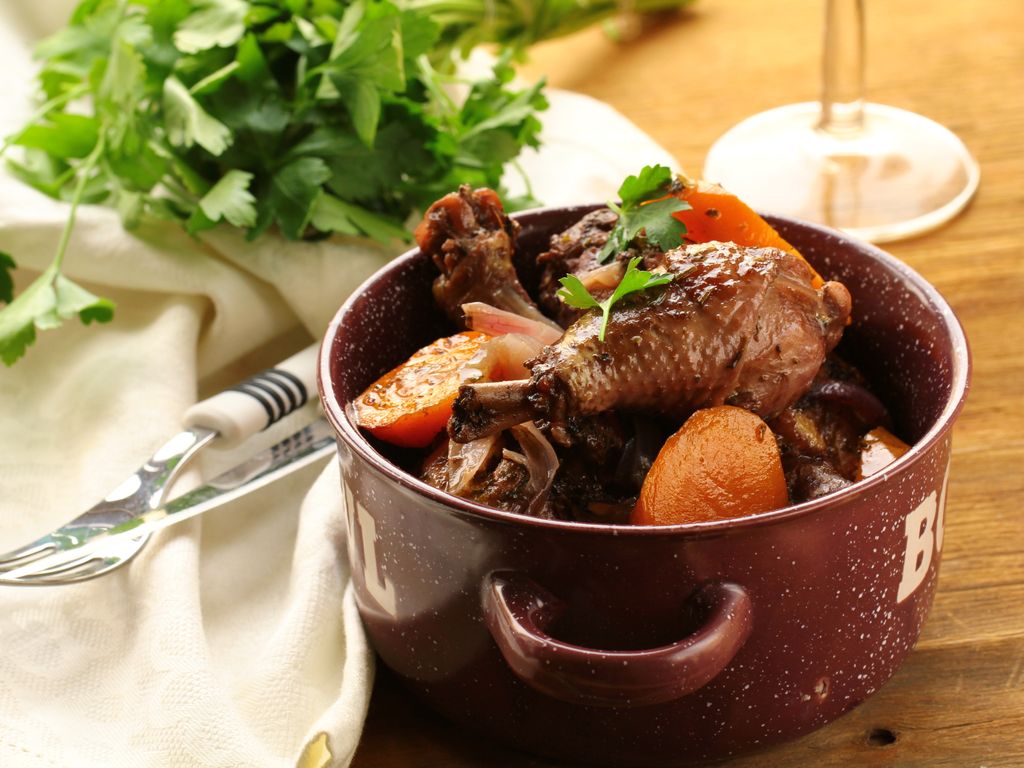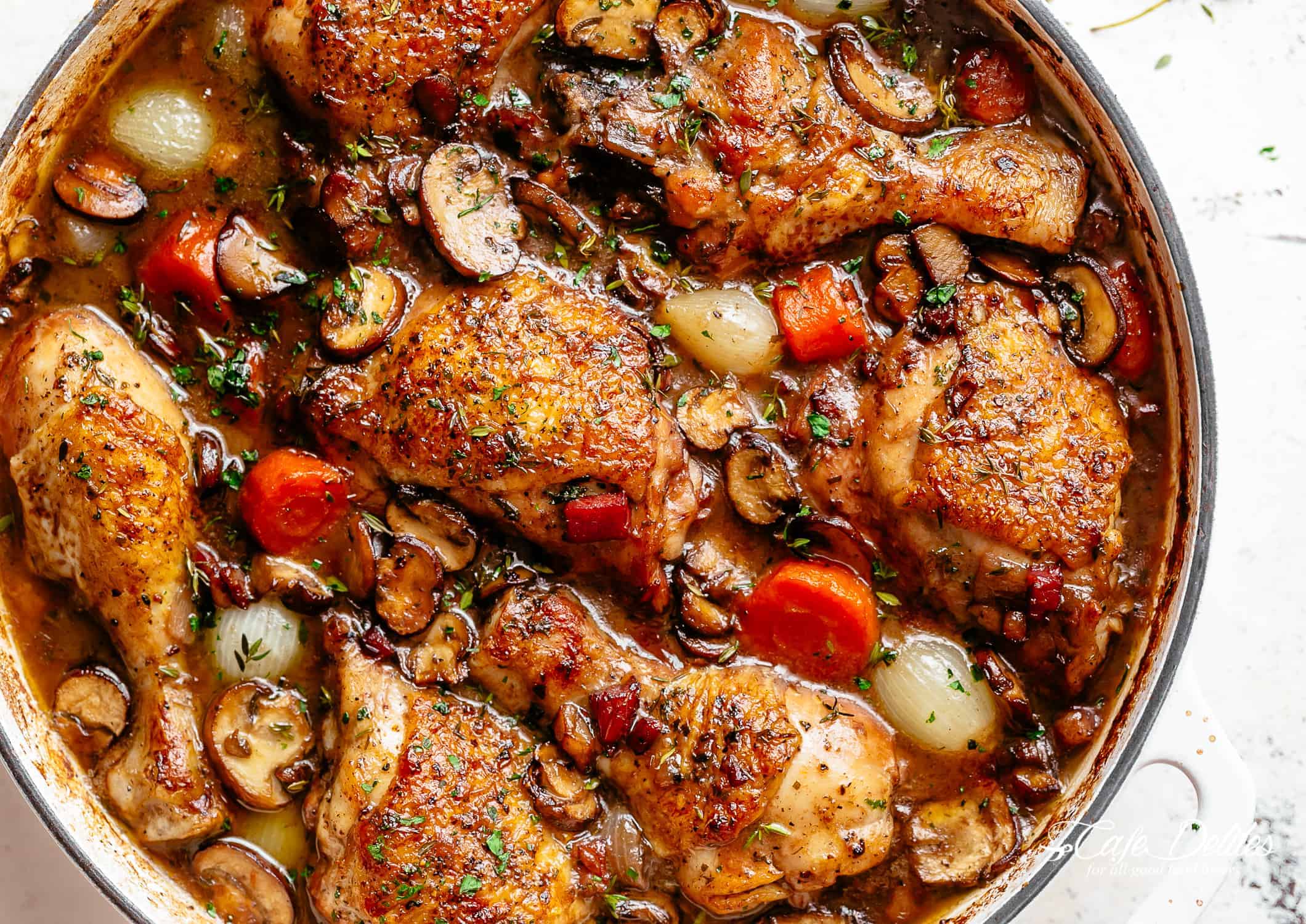

Remove the bacon to a plate with a slotted spoon. Add the bacon and cook over medium heat for 8 to 10 minutes, until lightly browned. Return the legs to the pan, add the mushrooms, sprinkle with parsley and serve.Heat the olive oil in a large Dutch oven. Place the legs on a plate and stir in the butter and flour to thicken the sauce. At the end of the cooking time, add the flour to the softened butter with a fork to make a paste. Use the rest of the butter to fry the mushrooms. Fifteen minutes before serving, place 30g of the butter in a small bowl to soften. Transfer the dish to the oven and cook uncovered for 1 ½ hrs, turning the legs a few times during cooking. Add the stock, wine, bouquet garni, rosemary and salt and pepper. Cook stirring until the Armagnac has evaporated (approx. Stir in the tomato puree and cook for an additional 2 minutes. Transfer the chicken and lardons to a dish and to the oil left in the pan, add the shallots, leeks, carrots and garlic. Increase the heat and add the chicken, making sure to fry it on all sides until golden. Gently fry the lardons for 3 minutes in an ungreased shallow cast iron casserole (approx. 1 sprig of rosemary, needles finely chopped.4 chicken legs (thigh and drumstick together).

Serve it with potatoes (steamed or mashed). It is essential that you cook the coq au vin in a moderately slow oven ( 160☌). (Friends in Bourgogne, please take no offence.) Another key ingredient was a squeeze of tangy tomato puree, which made the dish just a bit richer. I guess you can say it’s a coq au vin ‘Sud-Ouest’ style.
#Coq de vin full
Perhaps what made this coq au vin so exceptionally good was that I skipped the lighter Bourgogne and went straight for a robust Bergerac - an aromatic Pécharmant full of ripe blackberries, to be precise. Good ingredients really are the essence of good cooking, and the ingredients for my coq au vin were all locally grown and fresh from the market. Every time I’m there, ogling that gorgeous bounty, it feels as though I am inside one of those exquisite 16th-century kitchen/market scenes, like the one that opened this post, which is by Flemish painter Joachim Beuckelaer ( Market Woman with Fruit, Vegetables and Poultry, 1564, Gemäldegalerie Alte Meister). Or the cavolo nero I spotted a few weeks ago. Like the huge bunches of fresh basil they had one Saturday in late August, prompting me to make enough pesto to last us the whole week.

There’s something new every week, and what you find one week, may not be there the next. I shop at my local organic farmers’ market where they have the most mesmerizingly beautiful seasonal food: from regional poultry such as the famous ‘ Polderhoen’ (which I used for my recipe it’s actually a French breed), to a stand brimming with vibrant fruits, vegetables and fragrant herbs. Until last weekend.īefore giving you the recipe, let me first stress the importance of good ingredients. But oh that coq au vin! It just wasn’t right. What I’m trying to say is that cooking with red wine is an art I think I’ve mastered. I can make a mean boeuf bourguignon, my oeufs en meurette taste just like they do at my favorite restaurant in Autun, and I even make a pretty fancy pork chops in red wine sauce. I’ve been fortunate enough to have the perfect man for more than twenty years, but the perfect coq au vin? Let’s just say it was an endless quest that only led to disappointment. I finally found the ultimate recipe.įinding the perfect coq au vin recipe is like finding the perfect man once you have it (or him), you’ll never want to let it go. Looking to make the perfect coq au vin? Look no further.


 0 kommentar(er)
0 kommentar(er)
